Review of Lightweight, High-Temperature Thermal Insulation Materials for Aerospace
Abstract
1. Introduction
2. Flexible Ceramic Fiber Felts
| Materials | Density/(g·cm3) | Using Temperature Range/°C |
|---|---|---|
| AFRSI | 0.128 | 650 |
| TABI | Adjustable | 800~1200 |
| CFBI | 0.174 | ~1300 |
| CRI | ~0.2 | ~1200 |
3. Thermal Insulation Tiles
4. Aerogels
5. Multilayer Insulation System
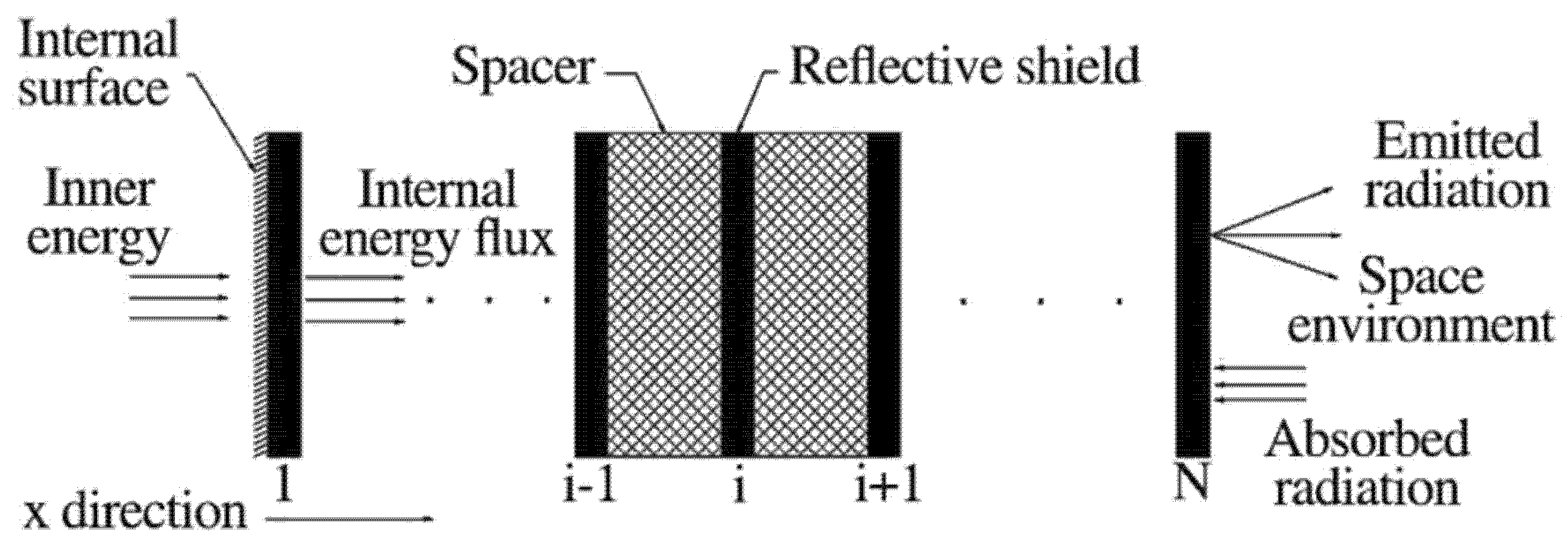
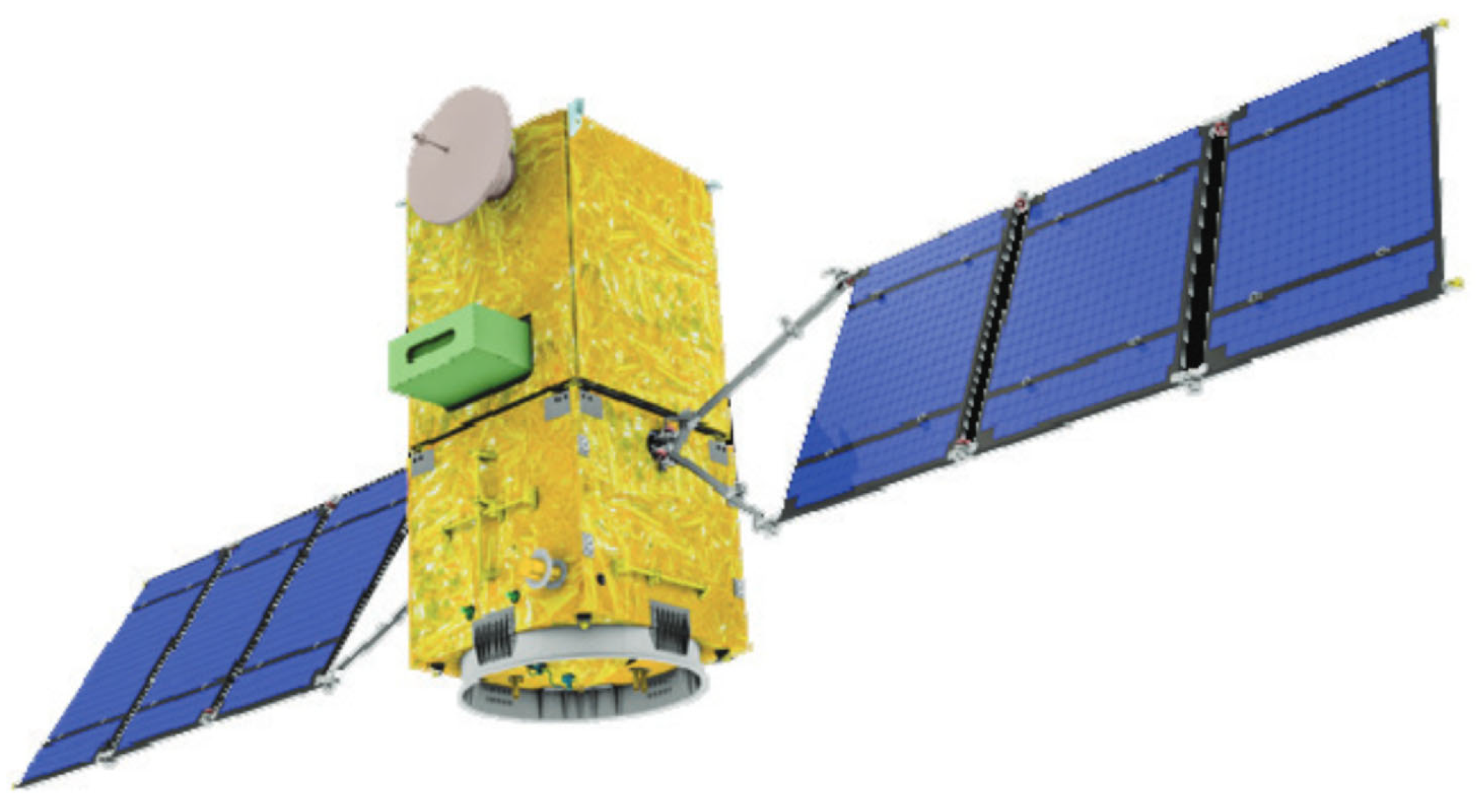
6. Development and Prospect
Author Contributions
Funding
Data Availability Statement
Conflicts of Interest
References
- Cheng, Y.; Zhou, S.; Hu, P.; Zhao, G.; Li, Y.; Zhang, X.; Han, W. Enhanced mechanical, thermal, and electric properties of graphene aerogels via supercritical ethanol drying and high-temperature thermal reduction. Sci. Rep. 2017, 7, 1439. [Google Scholar] [CrossRef] [PubMed]
- Zhang, W.; Ding, E.; Zhang, W.; Li, J.; Luo, C.; Zhang, L. Microstructure controllable polyimide/MXene composite aerogels for high-temperature thermal insulation and microwave absorption. J. Mater. Chem. C 2023, 11, 9438–9448. [Google Scholar] [CrossRef]
- Xiao, Y.; Liu, S.; Zhou, J.; Zhang, S.; Li, Z.; Xiong, S.; Li, L.; Feng, J. Lightweight, strong, and thermally insulating polybenzoxazine aerogel thermal protection composites for antioxidant ablation long to 1800 s. Compos. Part B Eng. 2023, 266, 111045.1–111045.11. [Google Scholar] [CrossRef]
- Li, Y.; Guo, A.; Xu, X.; Xue, Y.; Yan, L.; Hou, F.; Liu, J. Preparation and Properties of Highly Elastic, Lightweight, and Thermally Insulating SiO2 Fibrous Porous Materials. Materials 2022, 15, 3069. [Google Scholar] [CrossRef] [PubMed]
- Tafreshi, O.A.; Ghaffari-Mosanenzadeh, S.; Karamikamkar, S.; Saadatnia, Z.; Kiddell, S.; Park, C.B.; Naguib, H.E. Novel, flexible, and transparent thin film polyimide aerogels with enhanced thermal insulation and high service temperature. J. Mater. Chem. C 2022, 10, 5088–5108. [Google Scholar] [CrossRef]
- Xie, Y.; Peng, Y.; Ma, D.; Liu, W.; Wang, X. Lightweight, high-strength, flexible YAG fibrous membrane for efficient heat insulation. J. Alloys Compd. 2021, 876, 159978. [Google Scholar] [CrossRef]
- Fan, W.; Zhang, X.; Zhang, Y.; Zhang, Y.; Liu, T. Lightweight, strong, and super-thermal insulating polyimide composite aerogels under high temperature. Compos. Sci. Technol. 2019, 173, 47–52. [Google Scholar] [CrossRef]
- Guo, H.; Sun, J.; Ge, J.; Han, D.; Lv, Y.; Hu, P.; Wang, C.; Liu, Y. Flexible mullite nanofiber membranes with high-temperature resistance and excellent thermal insulation. Ceram. Int. 2024, 50, 4936–4944. [Google Scholar] [CrossRef]
- Zhao, B.; Wang, Y.; Huang, H. Preparation and characterization of novel lightweight Y2Si2O7 fibrous porous ceramics for high temperature thermal insulation. Ceram. Int. 2024, 50, 18510–18518. [Google Scholar] [CrossRef]
- Wang, J.; Cheng, L.; Ye, F.; Zhao, K. Amorphous/Nanocrystalline, Lightweight, Wave-Transparent Boron Nitride Nanobelt Aerogel for Thermal Insulation. ACS Appl. Mater. Interfaces 2023, 15, 47405–47414. [Google Scholar] [CrossRef]
- Okafor, P.E.; Tang, G. Study of effective thermal conductivity of a novel SiO2 aerogel composite for high-temperature thermal insulation. Int. J. Heat Mass Transf. 2023, 212, 124242. [Google Scholar] [CrossRef]
- Zhao, K.; Ye, F.; Cheng, L.; Zhou, J.; Wei, Y.; Cui, X. Formation of Ultra-High Temperature Ceramic Hollow Microspheres as Promising Lightweight Thermal Insulation Materials via a Molten Salt-Assisted Template Method. ACS Appl. Mater. Interfaces 2021, 13, 37388–37397. [Google Scholar] [CrossRef] [PubMed]
- Xiao, Y.; Liu, S.; Hu, Y.; Zhang, S.; Li, Z.; Li, L.; Feng, J. Excellent antioxidizing, thermally insulating and flame resistance silica-polybenzoxazine aerogels for aircraft ablative materials. J. Appl. Polym. Sci. 2022, 139, e52499. [Google Scholar] [CrossRef]
- Zhang, T.; Zhao, Y.; Li, X.; Ma, X.; Li, S.; Sun, M.; Liu, H.; Wang, K. Ultralight and heat-insulating mesoporous polyimide aerogels cross-linked with aminated SiO2 nanoparticles. Microporous Mesoporous Mater. 2021, 319, 111074. [Google Scholar] [CrossRef]
- Wang, Q.; Yu, H.; Ben, T.; Li, Q.; Li, F.; Xu, H.; Qiao, H.; Du, Q. Preparation of lightweight high-strength thermal insulation and decoration integration porous ceramics using red mud. J. Aust. Ceram. Soc. 2019, 56, 91–98. [Google Scholar] [CrossRef]
- Skubic, B.; Lakner, M.; Plazl, I. Thermal Treatment of New Inorganic Thermal Insulation Board Based on Expanded Perlite. Adv. Mater. Res. 2012, 560–561, 249–253. [Google Scholar] [CrossRef]
- Zhu, W.; Wang, H.; Ji, H.; Su, D. Lightweight aerogel-like silicon oxycarbide ceramics with directionally honeycomb-like structure for high temperature environments. J. Eur. Ceram. Soc. 2024, 44, 4027–4035. [Google Scholar] [CrossRef]
- An, Z.; Hou, X.; Zhou, P.; Zhang, R.; Fang, D. A novel flexible, layered, recoverable SiO2 fiber skeleton and aerogel composites material prepared by papermaking process. Ceram. Int. 2021, 47, 12963–12969. [Google Scholar] [CrossRef]
- Wang, F.; Wang, Y.; Sun, C.; Zhang, P.; Xia, X. Experimental investigation on temperature-dependent effective thermal conductivity of ceramic fiber felt. Int. J. Therm. Sci. 2024, 200, 108965. [Google Scholar] [CrossRef]
- Wu, C.J.; Li, W.J.; Yang, J.Y.; Guo, J.Y.; Su, L.J.; Zahng, L.J. Performance Comparison of Aerospace High-Temperature Resistant Ceramic Fiber Felt. Mater. Sci. Forum 2021, 1036, 168–174. [Google Scholar]
- Deng, Z.; Peng, Y.; Qin, W.W.; Liu, B.; Zhang, G.; Wang, X.; Xie, Y.; Zhu, L.; Xu, D. Flexible, high strength and low thermal conductivity of a novel high entropy oxide ceramic fiber membranes. Chem. Eng. J. 2023, 475, 146260. [Google Scholar] [CrossRef]
- Sawko, P.M.; Calamito, D.P.; Jong, A. Method to Produce Flexible Ceramic Thermal Protection System Resistant to High Aeroacoustic Noise. U.S. Patent 5,657,795, 19 August 1997. [Google Scholar]
- Aiichiro, T.; Fumito, T.; Kazuyuki, M. Compressive Resistant Type Flexible Thermal Insulation Material. JP19970050359. JPH10246391A. Available online: https://www.j-platpat.inpit.go.jp/c1801/PU/JP-H10-246391/11/en (accessed on 23 March 2025).
- Penide-Fernandez, R.; Sansoz, F. Anisotropic thermal conductivity under compression in two-dimensional woven ceramic fibers for flexible thermal protection systems. Int. J. Heat Mass Transf. 2019, 145, 118721. [Google Scholar] [CrossRef]
- Xu, Z.; Kong, W.; Su, X.; Zhai, Y.; Luo, D.; Li, J.; Zhao, J.; Jia, C.; Zhu, M. Solution blow spun flexible zirconia nanofibers toward high-performance 2D and 3D nanostructures. Ceram. Int. 2024, 50, 17419–17427. [Google Scholar] [CrossRef]
- Hu, L.; Chen, L.; Gao, J.; Fu, W.; Wu, J. Thermal Insulating Ceramic Fibers and Their Products. Adv. Ceram. 2002, 1, 24–26. [Google Scholar]
- Gallegos, J. Thermal math model analysis of FRSI test article subjected to cold soak and entry environments Flexible Reuseable Surface Insulation in Space Shuttle Orbiter. In Proceedings of the 10th Space Simulation Conference, Bethesda, MD, USA, 16–18 October 1978; NASA Langley Research Center: Hampton, VA, USA, 1978; Volume 131. [Google Scholar]
- Xia, G.; Chen, W.; Qin, Z. Development of Flexible Thermal Protection for System Inflatable Re-entry Vehicles. Aerosp. Mater. Technol. 2003, 33, 1–6. [Google Scholar]
- Mui, D.; Clancy, H.M. Development of a Protective Ceramic Coating for Shuttle Orbiter Advanced Flexible Reusable Surface Insulation (AFRSI). In Proceedings of the 9th Annual Conference on Composites and Advanced Ceramic Materials: Ceramic Engineering and Science Proceedings; American Ceramic Society: Columbus, OH, USA, 2008; pp. 7–9. [Google Scholar]
- Han, H. Analysis on thermal protection systems structures and materials for space transportation systems abroad. Aerosp. Mater. Technol. 1997, 4, 1–4. [Google Scholar]
- Kourtides, D.A.; Pitts, W.C.; Goldstein, H.E.; Sawko, P.M. Composite Flexible Blanket Insulation. U.S. Patent 5,277,959, 11 January 1994. [Google Scholar]
- Sawko, P.M.; Goldstein, H.E. Tailorable Advanced Blanket Insulation (TABI). U.S. Patent 11697, 1 September 1987. [Google Scholar]
- Huang, H.Y.; Su, L.J.; Lei, C.S.; Li, J.; Zhang, E.S.; Li, W.J.; Yang, J.Y.; Zhao, Y.M.; Pei, Y.C.; Zhang, H. Reusable thermal protective materials: Application and research progress. Acta Aeronaut. Astronaut. Sin. 2020, 41, 023716. (In Chinese) [Google Scholar]
- Beck, R.A.S.; Driver, D.M.; Wright, M.J.; Hwang, H.H.; Edquist, K.T.; Sepka, S.A. Development of the mars science laboratory heatshield thermal protection system. J. Spacecr. Rocket. 2014, 51, 1139–1150. [Google Scholar] [CrossRef]
- Oberg, J.U.A. Air Force Launches Secret Flying Twinkie. IEEE Spectr. 2010, 47, 11–12. [Google Scholar] [CrossRef][Green Version]
- Tsukahara, A.; Yamao, H.; Miho, K. Advanced thermal protection systems for reusable launch vehicles. In Proceedings of the 10th AIAA/NAL-NASDA-ISAS International Space Planes and Hypersonic Systems and Technologies Conference, Kyoto, Japan, 24–27 April 2001. [Google Scholar] [CrossRef]
- Gong, C.; Bing, C.; Gu, L. Comparison Study of RBCC Powered Suborbital Reusable Launch Vehicle Concepts. In Proceedings of the 20th AIAA International Space Planes and Hypersonic Systems and Technologies Conference, Glasgow, Scotland, 6–9 July 2015. [Google Scholar]
- Zhou, Z.; Ma, B.; Zhang, C.; Han, X.; Liu, F.; Dong, Y. Reusable Thermal Protection System for Orbital Test Vehicle X-37B. Spacecr. Eng. 2016, 25, 95–101. [Google Scholar]
- He, D.; Ou, D.; Gao, H. Thermal insulation and anti-vibration properties of MoSi_2-based coating on mullite fiber insulation tiles. Ceram. Int. 2022, 48, 1844–1850. [Google Scholar] [CrossRef]
- Shibata, K. Recent inorganic fibrous thermal insulation. Nenryo Kyokai-Shi/J. Fuel Soc. Jpn. 1989, 68, 708–718. [Google Scholar] [CrossRef]
- Sun, C.C.; Hu, Z.J.; Li, T.Q.; Zhang, H.B.; Sun, Z.J.; Zhang, Z.G. Preparation and Properties of Ceramic Tiles for Heat Insulation. Mater. Sci. Forum 2007, 546–549, 2157–2162. [Google Scholar] [CrossRef]
- Wang, Y.; Wang, Z.; Ye, H. Optimization of geometric parameters for planar array thermal insulation tiles. Spacecr. Environ. Eng. 2019, 36, 223–228. [Google Scholar] [CrossRef]
- Sun, J.; Hu, Z.; Sun, C.; Wang, X. Fibrous Ceramic Tiles for Ultrahigh Temperature Thermal Insulation. In Proceedings of the 64th International Astronautical Congress, Beijing, China, 23–27 September 2013. [Google Scholar]
- Guan, C.; Li, Y.; He, X. Research Status of Structures and Materials for Reusable TPS. Aerosp. Mater. Technol. 2003, 6, 7–11. [Google Scholar]
- Schmidt, R.P. Aircraft thermal protection system:US19950418104. US5560569A. Available online: https://www.freepatentsonline.com/5560569.pdf (accessed on 23 March 2025).
- Moslehy, F.A.; Mueller, S.A.; Davis, R.M. Application of laser-based methods and finite element analysis to bond verfication of space shuttle tiles. In Industrial Optical Sensing and Metrology: Applications and Integration; SPIE: Bellingham, WA, USA, 1993; pp. 26–35. [Google Scholar]
- Cleland, J.; Iannetti, F. Thermal Protection System of the Space Shuttle; NASA: Washington, DC, USA, 1989. [Google Scholar]
- Cooper, P.A.; Holloway, P.F. The Shuttle tile story. Astronaut. Aeronaut. 1981, 19, 24–34. [Google Scholar]
- Walker, J.D. From Columbia to Discovery: Understanding the impact threat to the space shuttle. Int. J. Impact Eng. 2009, 36, 303–317. [Google Scholar] [CrossRef]
- Williams, J.G. Structural Tests on Space Shuttle Thermal Protection System Constructed with Non-Densified and Densified LF900 and LF2200 Tile: NASA/TM-1981-81903; NASA: Washington, DC, USA, 1981. [Google Scholar]
- Frosch, R.A.; Leiser, D.B.; Goldstein, H.E.; Smith, M. Fibrous refractory composite insulation: US19780940688. US4148962A. Available online: https://www.freepatentsonline.com/4148962.pdf (accessed on 23 March 2025).
- Smith, M.; Leiser, D.; Goldstein, H. Alumina-Enhanced Thermal Barrier: NASA/ARC-1989-12135; NASA: Washington, DC, USA, 1989. [Google Scholar]
- Heng, V.; Hinkle, K.A.; Santos, M.A. Rigid Insulation and Method of Producing Same. U.S. Patent 6716782B2, 6 April 2004. [Google Scholar]
- Frosch, R.A.; Leiser, D.B.; Goldstein, H.E.; Smith, M. Fibrous Refractory Composite Insulation. U.S. Patent 4148962A, 8 September 1978. [Google Scholar]
- Strauss, E.; Johnson, C.; Graese, R.W.; Campbell, R. Producibility of fibrous refractory composite insulation, FRCI 40-20. Ceram. Eng. Sci. Proc. 1983, 4, 611–623. [Google Scholar]
- Leiser, D.B.; Smith, M.; Stewart, D. A.Options for improving rigidized ceramic heatshields. Ceram. Eng. Sci. Proc. 1985, 6, 757–768. [Google Scholar]
- Wang, S.; Su, X.L.; Zheng, W.J.; Yang, F.; Li, H.; Zou, W. Study on preparation of SiO2/PTFE aerogel-like materials via atmospheric drying and their thermal insulation performance. J. Sol-Gel Sci. Technol. 2024, 109, 204–214. [Google Scholar] [CrossRef]
- Liu, C.; Wang, B.; Zhang, J.; Chen, M.; Liu, Q. Short-cut polyisophthaloyl metaphenylene diamine fiber reinforced polyimide aerogel composites for improving thermal insulation and mechanical performance. J. Appl. Polym. Sci. 2024, 141, e55950. [Google Scholar] [CrossRef]
- Zhao, K. Study on Thermal Insulation Performance of Silica Aerogel Thermal Insulation Blankets. Gels 2024, 10, 707. [Google Scholar] [CrossRef] [PubMed]
- Zhang, X.; Yang, L.; Han, S.; Dong, S.; Chen, G.; Liu, J. Multifunctional mullite fiber reinforced SiBCN ceramic aerogel with excellent microwave absorption and thermal insulation performance. Ceram. Int. 2024, 50, 35145–35153. [Google Scholar] [CrossRef]
- Cha, J.; Kim, S.; Park, K.W.; Dong, R.L.; Kim, S. Improvement of window thermal performance using aerogel insulation film for building energy saving. J. Therm. Anal. Calorim. 2014, 116, 219–224. [Google Scholar] [CrossRef]
- Kistler, S.S. Coherent Expanded-Aerogels. J. Phys. Chem. 1931, 36, 52–64. [Google Scholar] [CrossRef]
- Teichner, S.J.; Nicolaon, G.A.; Vicarini, M.A.; Gardes, G.E.E. Inorganic oxide aerogels. Adv. Colloid Interface Sci. 1976, 5, 245–273. [Google Scholar] [CrossRef]
- Pei, Y.; Zhang, W.; Li, W.; Liu, Y.; Lei, C.; Zhang, E.; Zhang, H. Research status and application prospect of aerogels in the aerospace field. Aerosp. Technol. 2022, 1, 64–73. [Google Scholar]
- Deng, Z.; Wang, J.; Wu, A.; Shen, J.; Zhou, B. High strength SiO2 aerogel insulation. J. Non-Cryst. Solids 1998, 225, 101–104. [Google Scholar] [CrossRef]
- Kuchta, L.; Fajnor, V.Š. About the synthesis and thermal stability of SiO2-aerogel. J. Therm. Anal. 1996, 46, 515–520. [Google Scholar] [CrossRef]
- Jo, M.H.; Hong, J.K.; Park, H.H.; Kim, J.J.; Hyun, S.H. Evaluation of SiO2 aerogel thin film with ultra low dielectric constant as an intermetal dielectric. Microelectron. Eng. 1997, 33, 343–348. [Google Scholar] [CrossRef]
- Lagamba, L.; Iommi, R.; Wojtsekhowski, B. Test and Development of a Cherenkov di Usion Detector Prototype Using Airglass Aerogel at TJNAF. 2000. Available online: https://www.semanticscholar.org/paper/Test-and-development-of-a-Cherenkov-di-usion-using-Lagamba-Iommi/e9410317f547c68fc698dcdf276ddc283c7077b8?utm_source=direct_link (accessed on 23 March 2025).
- Tsou, P. Silica aerogel captures cosmic dust intact. J. Non-Cryst. Solids 1995, 186, 415–427. [Google Scholar] [CrossRef]
- Hasan, M.A.; Sangashetty, R.; Esther, A.C.M.; Patil, S.B.; Sherikar, B.N.; Dey, A. Prospect of Thermal Insulation by Silica Aerogel: A Brief Review. J. Inst. Eng. 2017, 98, 297–304. [Google Scholar] [CrossRef]
- Rashid, A.B.; Shishir, S.I.; Mahfuz, A.; Hossain, T.; Hoque, E. Silica Aerogel: Synthesis, Characterization, Applications, and Recent Advancements. Part. Part. Syst. Charact. 2023, 40, 2200186. [Google Scholar] [CrossRef]
- Shi, B.; Zhou, Z.; Chen, Y.; Wang, X.; Xu, B. Preparation and properties of hydrophobic and highly transparent SiO2 aerogels. Ceram. Int. 2023, 49, 27597–27603. [Google Scholar] [CrossRef]
- Chen, M.Z.; Dasanayake, A.; Deb, R.; Deb, V.; Zhao, E. Aerogel Composites: Historical and Novel Synthesis Methods and Applications; IEEE: Piscataway, NJ, USA, 2020. [Google Scholar]
- Fomitchev, D.V.; Trifu, R.; Gould, G. Fiber Reinforced Silica Aerogel Composites: Thermal Insulation for High-Temperature Applications. In Proceedings of the Ninth Biennial Conference on Engineering, Construction, and Operations in Challenging Environments, Houston, TX, USA, 7–10 March 2004. [Google Scholar]
- Yin, Z.; Liu, Y.; Lei, N. Characteristics of SiO2 Aerogel and Its Applications on Sandwich Structure Radome. Aerosp. Manuf. Technol. 2013, 2, 1–4. [Google Scholar]
- Fesmire, J.E. Aerogel insulation systems for space launch applications. Cryogenics 2006, 46, 111–117. [Google Scholar] [CrossRef]
- Glavin, D.P.; Dworkin, J.P.; Sandford, S.A. Detection of cometary amines in samples returned by Stardust. Meteorit. Planet. Sci. 2010, 43, 399–413. [Google Scholar] [CrossRef]
- Feng, J.; Gao, Q.F.; Feng, J.Z.; Jiang, Y.Z. Preparation and properties of fiber reinforced SiO2 aerogel insulation composites. J. Natl. Univ. Def. Technol. 2010, 32, 40–44. [Google Scholar]
- Cai, H.; Jiang, Y.; Feng, J.; Zhang, S.; Feng, J. Preparation of silica aerogels with high temperature resistance and low thermal conductivity by monodispersed silica sol. Mater. Des. 2020, 191, 108640. [Google Scholar] [CrossRef]
- Cai, H.; Jiang, Y.; Chen, Q.; Zhang, S.; Li, L.; Feng, J.; Feng, J. Sintering behavior of SiO2 aerogel composites reinforced by mullite fibers via in-situ rapid heating TEM observations. J. Eur. Ceram. Soc. 2020, 40, 127–135. [Google Scholar] [CrossRef]
- Luo, K.; Jiang, Y.; Feng, J.; Feng, J. Research Progress in Improving the Heat Resistance of SiO2 Aerogel. J. Synth. Cryst. 2016, 45, 2389–2393. [Google Scholar]
- Pakharukova, V.P.; Shalygin, A.S.; Gerasimov, E.Y.; Tsybulya, S.; Martyanov, O. Structure and morphology evolution of silica-modified pseudoboehmite aerogels during heat treatment. J. Solid State Chem. 2016, 233, 294–302. [Google Scholar] [CrossRef]
- Yu, H.; Jiang, Y.; Lu, Y.; Li, X.; Zhao, H.; Ji, Y.; Wang, M. Quartz fiber reinforced Al2O3-SiO2 aerogel composite with highly thermal stability by ambient pressure drying. J. Non-Cryst. Solids 2019, 505, 79–86. [Google Scholar] [CrossRef]
- Li, H.; Chen, Y.; Wang, P.; Xu, B.; Ma, Y.; Wen, W.; Yang, Y.; Fang, D. Porous carbon-bonded carbon fiber composites impregnated with SiO2-Al2O3 aerogel with enhanced thermal insulation and mechanical properties. Ceram. Int. 2018, 44, 3484–3487. [Google Scholar] [CrossRef]
- Xu, L.; Jiang, Y.; Feng, J.; Feng, J.; Yue, C. Infrared-opacified Al2O3–SiO2 aerogel composites reinforced by SiC-coated mullite fibers for thermal insulations. Ceram. Int. 2015, 41, 437–442. [Google Scholar] [CrossRef]
- Peterson, P. “The Heat-Tight Vessel” Atransport and Storage Vessel for Liquid Oxygen and Liquid Nitrogen; Translation No 1147; Office of Naval Intelligence, University of Lund: Lund, Sweden, 1951; Volume 12. [Google Scholar]
- Feller, J.R.; Johnson, W. Dependence of multi-layer insulation thermal performance on interstitial gas pressure. In Proceedings of the Advances in Cryogenic Engineering: Transactions of the Cryogenic Engineering Conference-CEC; American Institute of Physics: College Park, MA, USA,, 2012. [Google Scholar]
- Stochl, R.J. Multi-Layer Insulation Design Technology for Improved Thermal Performance. Itea J. Test Eval. 2011, 32, 241. [Google Scholar]
- Kanda, K.Y.S. Heat transfer through multi-layer insulation (MLI). Physica C Supercond. Its Appl. 2021, 583, 1353799. [Google Scholar] [CrossRef]
- Hurd, J.A.; Van Sciver, S.W. Measurements of the Apparent Thermal Conductivity of Multi-Layer Insulation between 20 K and 90 K. In Aip Conference Proceedings; American Institute of Physics: College Park, MA, USA, 2014. [Google Scholar]
- Mesforoush, H.; Pakmanesh, M.R.; Esfandiary, H.; Asghari, S.; Baniasadi, E. Experimental and numerical analyses of thermal performance of a thin-film multi-layer insulation for satellite application. Cryogenics 2019, 102, 77–84. [Google Scholar] [CrossRef]
- Silva, D.F.D.; Muraoka, I.; Garcia, E.C. Thermal Control Design Conception of the Amazonia-1 Satellite. J. Aerosp. Technol. Manag. 2014, 6, 169–176. [Google Scholar] [CrossRef]
- Cornell, P.A.; Hurwitz, F.I.; Ellis, D.; Shaw, K.; Schmitz, P. Investigation of Insulation Materials for Future Radioisotope Power Systems (RPS). In Proceedings of the 11th International Energy Conversion Engineering Conference (IECEC), San Jose, CA, USA, 14–17 July 2013. [Google Scholar]
- Clarke, E.; Giglio, J.; Wahlquist, K.; Dees, C.; Gates, A.; Birth, J.; Davis, S.; Horkley, B.; Rich, L. Multi-Mission Thermoelectric Generator Fueling Testing and Integration Operations for Mars 2020. Nucl. Technol. 2022, 208, S11–S17. [Google Scholar] [CrossRef]
- Penswick, L.B. A 1050 K Stirling Space Engine Design. Physical Review; NASA: Washington, DC, USA, 1988. [Google Scholar]
- Dunlay, J.; Fronduto, J.; Paquin, M.; Poirier, V.; Someren, L.V. Vacuum Foil-Type Thermal Insulation for Radioisotope Power Systems. Phase I, Final Report, February 8, 1966–August 8, 1967; US Atomic Energy Commission: Germantown, MA, USA, 1968.
- Thermo Electron Engineering Corp. Zirconia-Foil Compatibility Test. Phase I; Thermal Insulation for Brayton Isotope Power System (BIPS); Thermo Electron Engineering Corp.: Waltham, MA, USA, 1976. [Google Scholar]
- Determan, W.R.; Emmons, J.; Huffman, F.N.; Dunlay, J.; Field, G. MULTI-FOIL thermal insulation for the Dynamic Isotope Power System. In Proceedings of the 24th Intersociety Energy Conversion Engineering Conference, Washington, DC, USA, 6–11 August 1989. [Google Scholar]

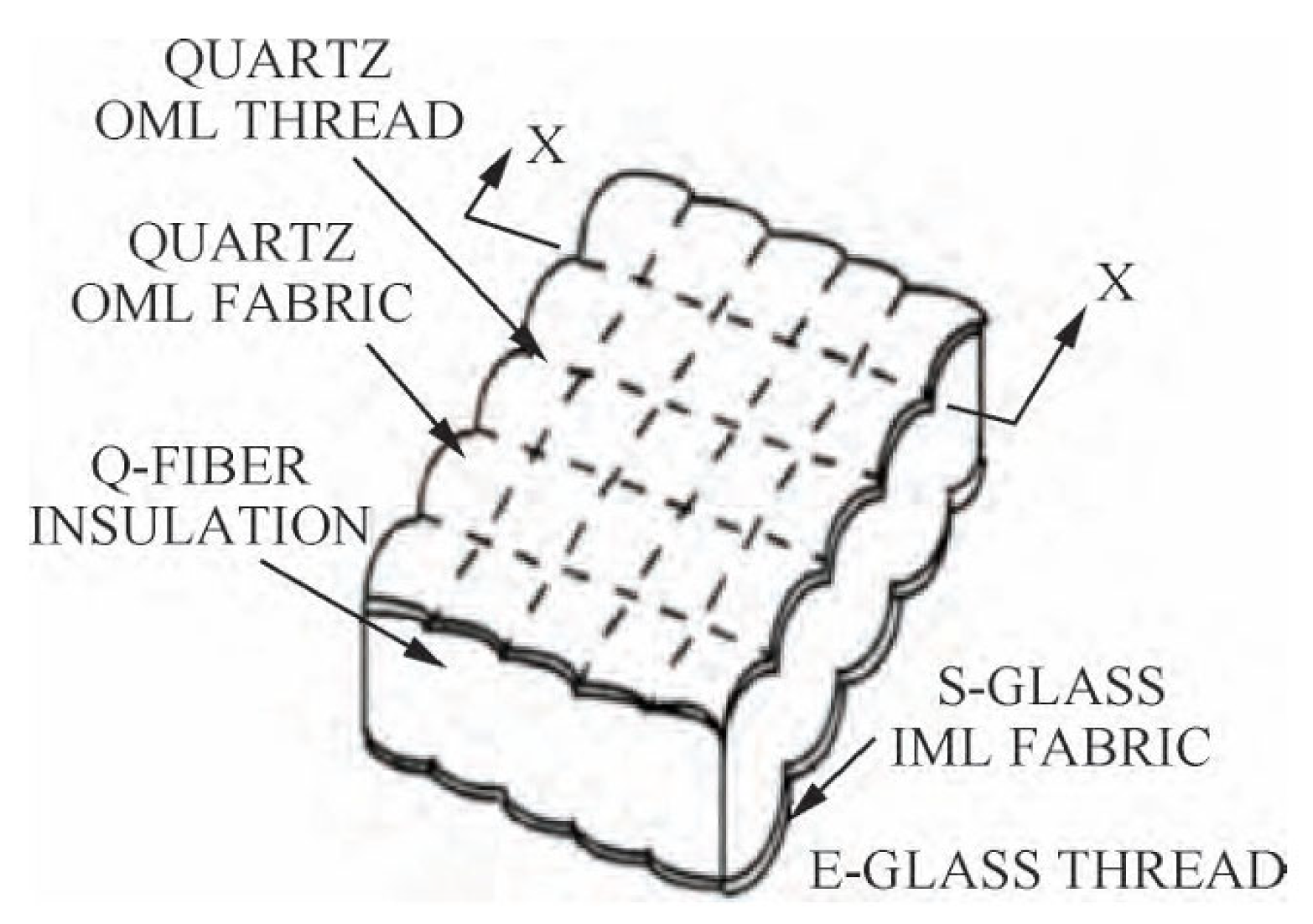

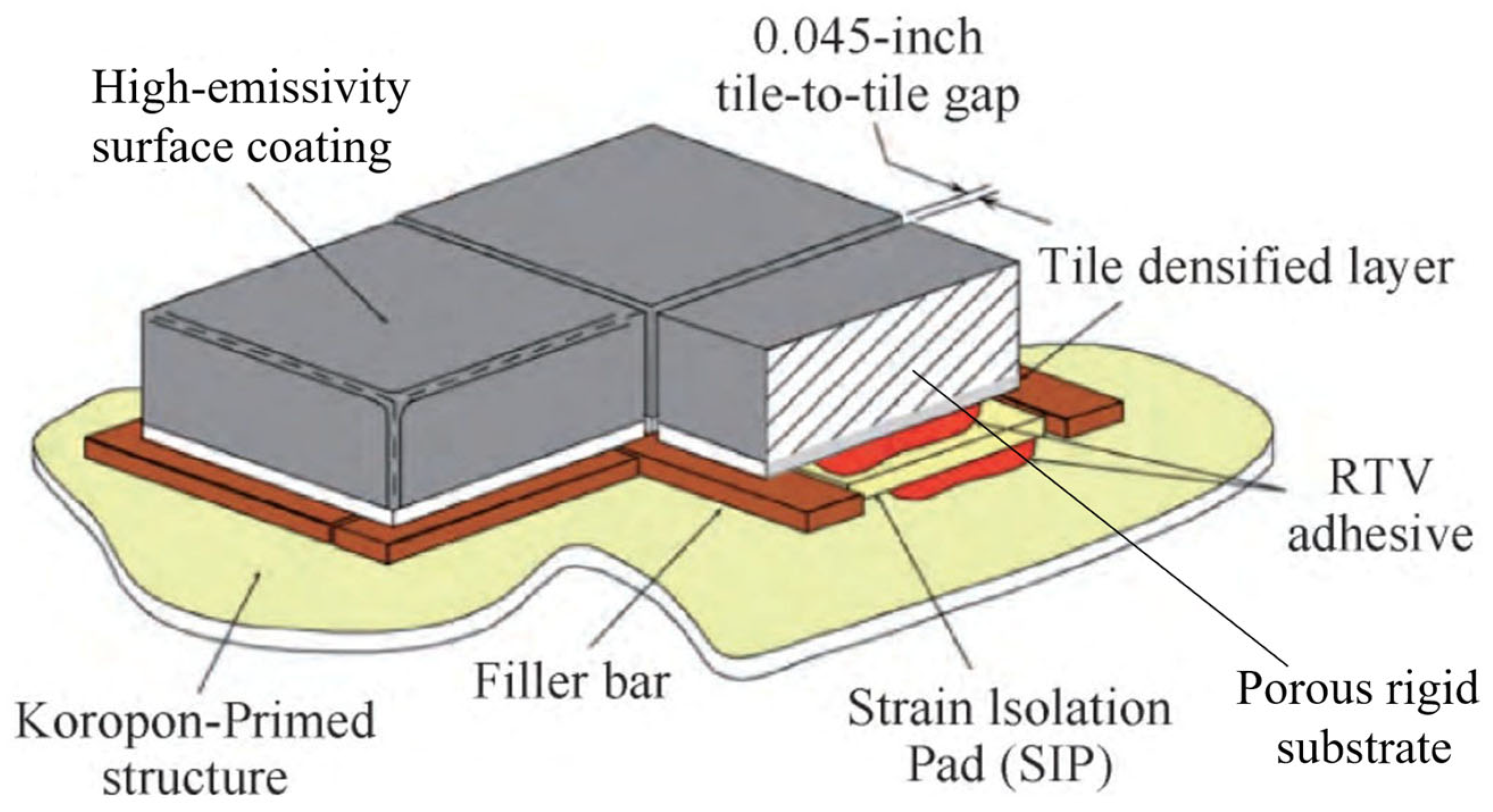
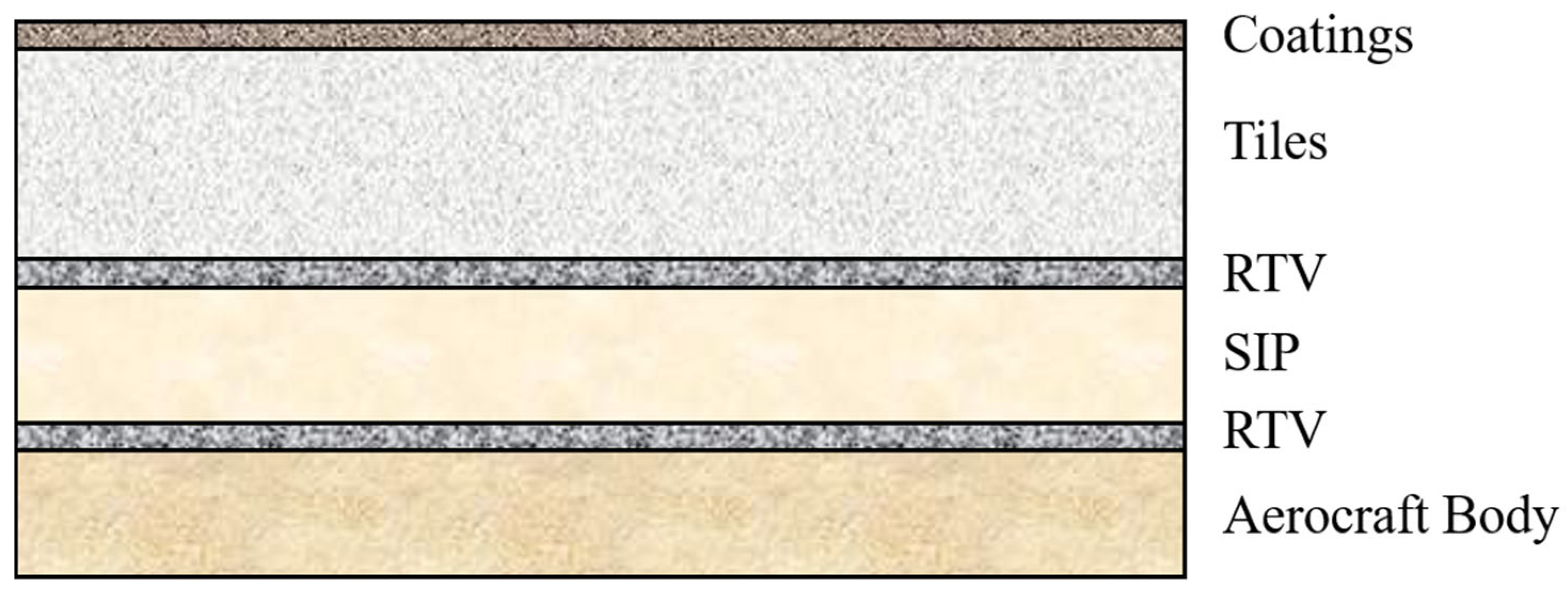
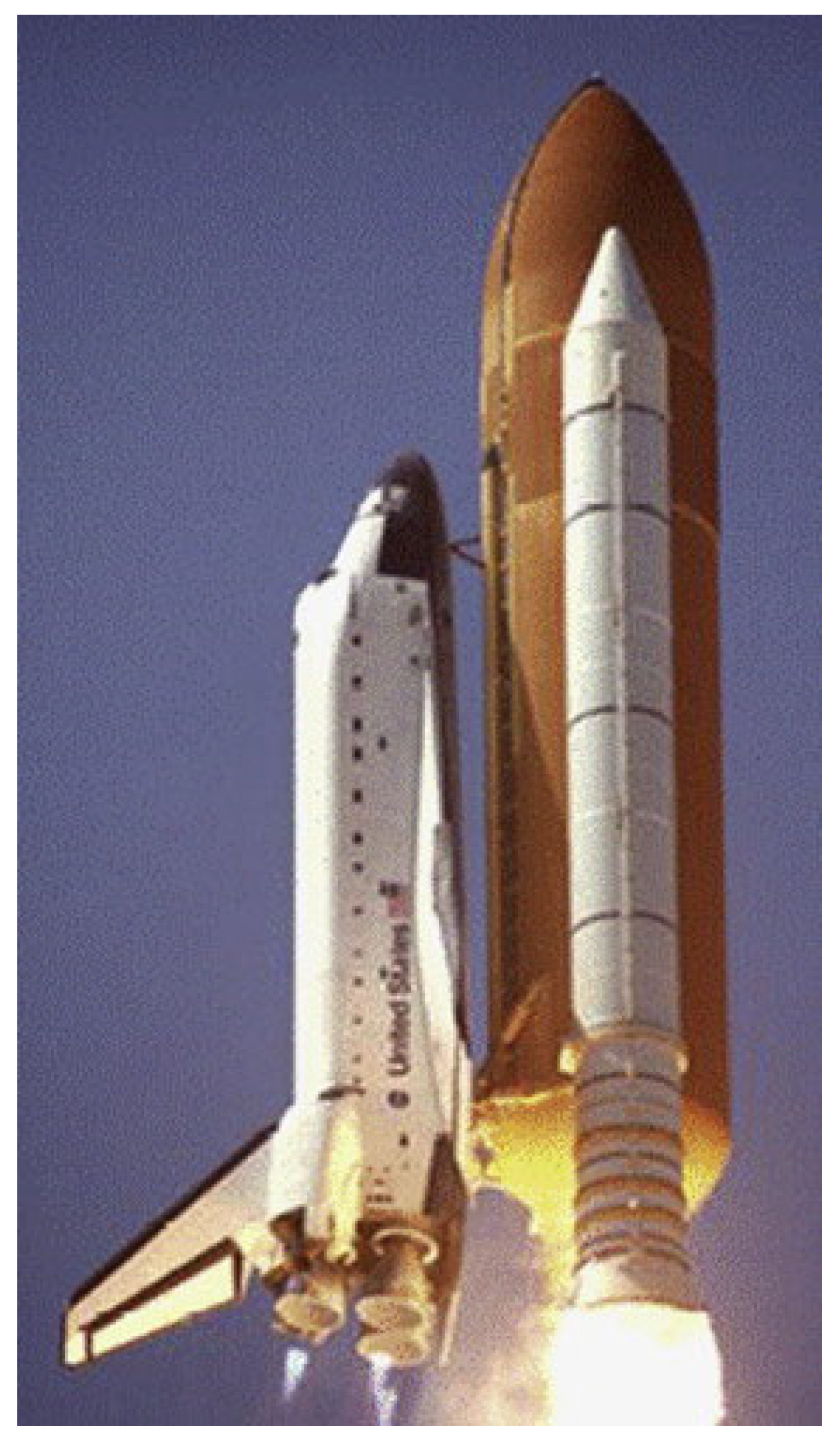



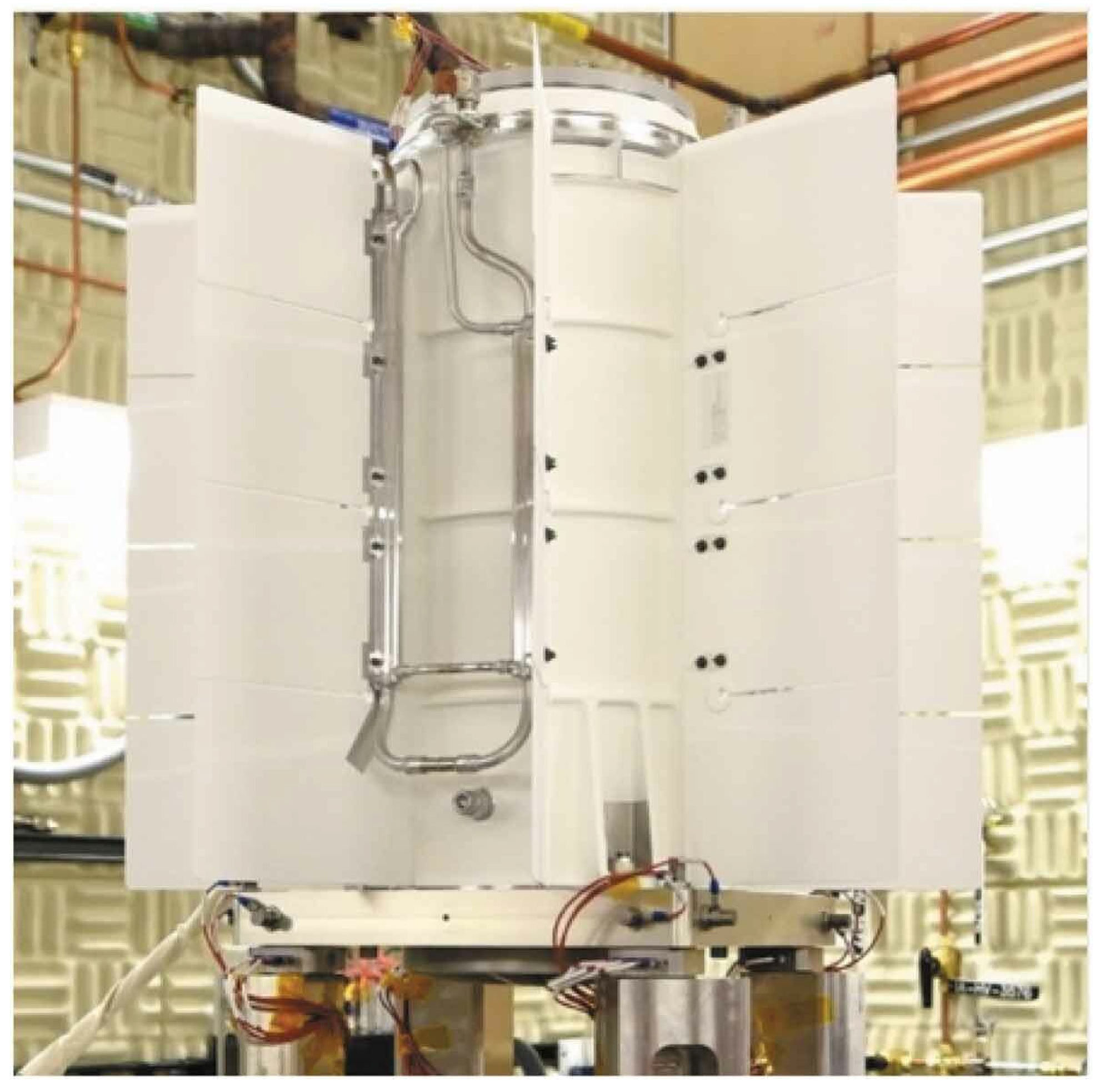
Disclaimer/Publisher’s Note: The statements, opinions and data contained in all publications are solely those of the individual author(s) and contributor(s) and not of MDPI and/or the editor(s). MDPI and/or the editor(s) disclaim responsibility for any injury to people or property resulting from any ideas, methods, instructions or products referred to in the content. |
© 2025 by the authors. Licensee MDPI, Basel, Switzerland. This article is an open access article distributed under the terms and conditions of the Creative Commons Attribution (CC BY) license (https://creativecommons.org/licenses/by/4.0/).
Share and Cite
Zhang, Q.; Huang, H.; Lei, C.; Liu, Y.; Li, W. Review of Lightweight, High-Temperature Thermal Insulation Materials for Aerospace. Materials 2025, 18, 2383. https://doi.org/10.3390/ma18102383
Zhang Q, Huang H, Lei C, Liu Y, Li W. Review of Lightweight, High-Temperature Thermal Insulation Materials for Aerospace. Materials. 2025; 18(10):2383. https://doi.org/10.3390/ma18102383
Chicago/Turabian StyleZhang, Qi, Hongyan Huang, Chaoshuai Lei, Yuanyuan Liu, and Wenjing Li. 2025. "Review of Lightweight, High-Temperature Thermal Insulation Materials for Aerospace" Materials 18, no. 10: 2383. https://doi.org/10.3390/ma18102383
APA StyleZhang, Q., Huang, H., Lei, C., Liu, Y., & Li, W. (2025). Review of Lightweight, High-Temperature Thermal Insulation Materials for Aerospace. Materials, 18(10), 2383. https://doi.org/10.3390/ma18102383







